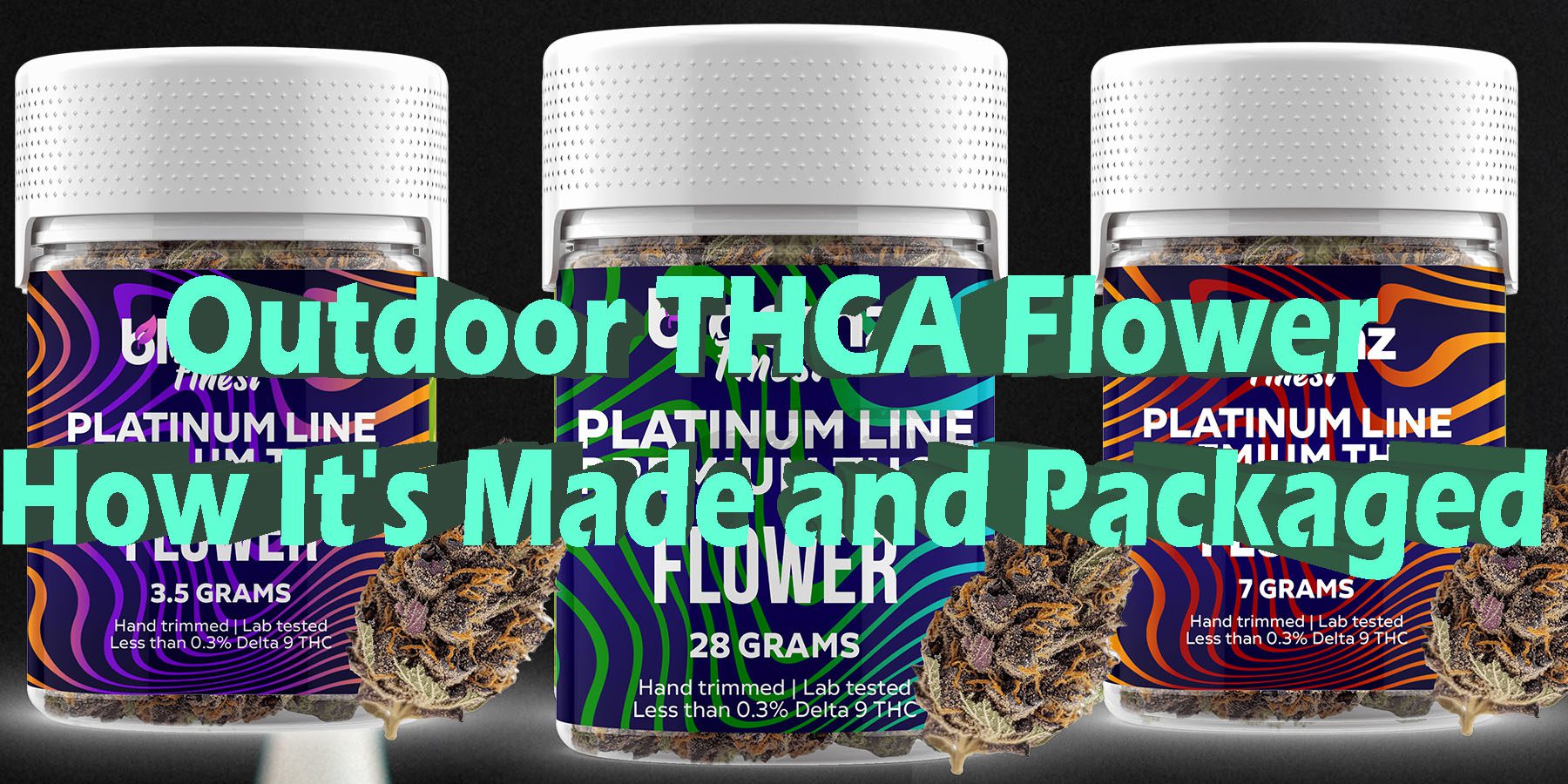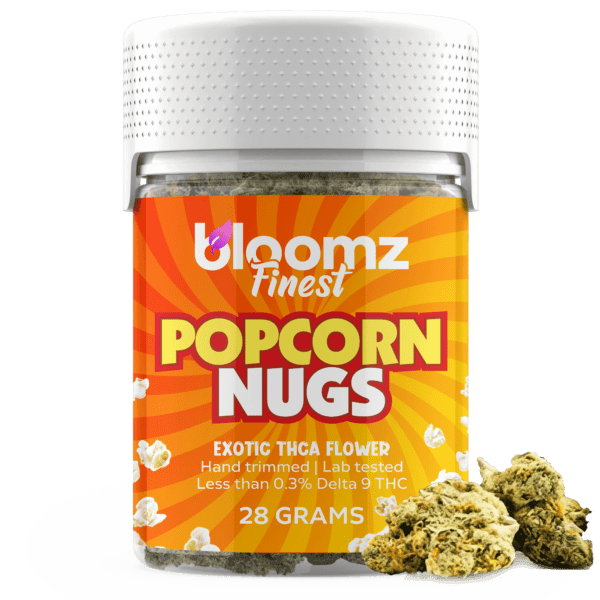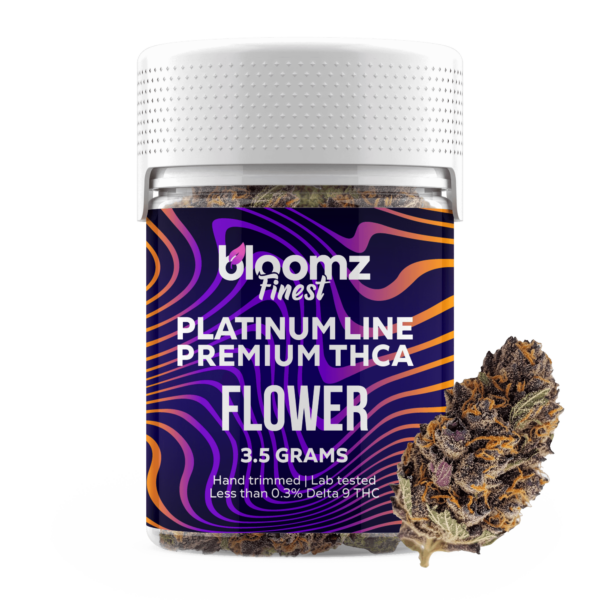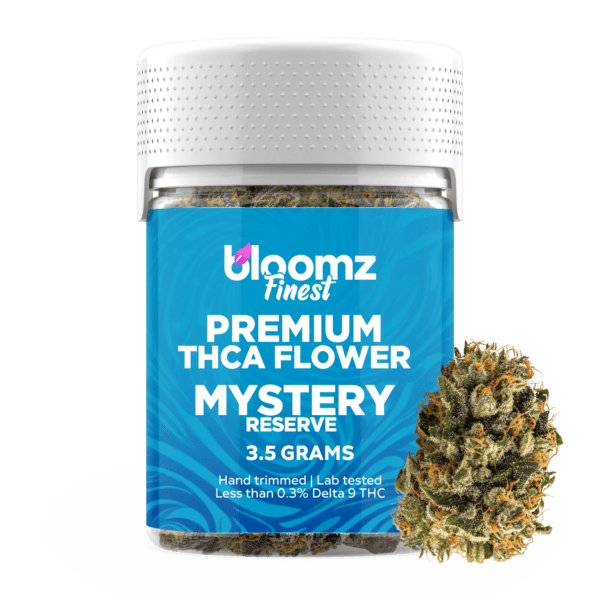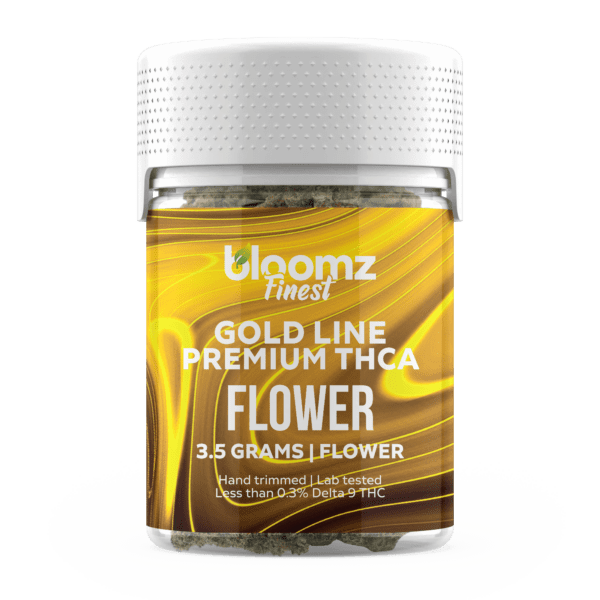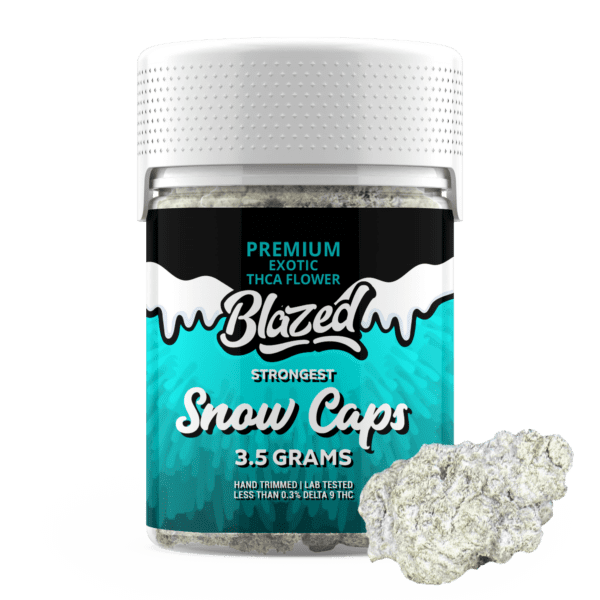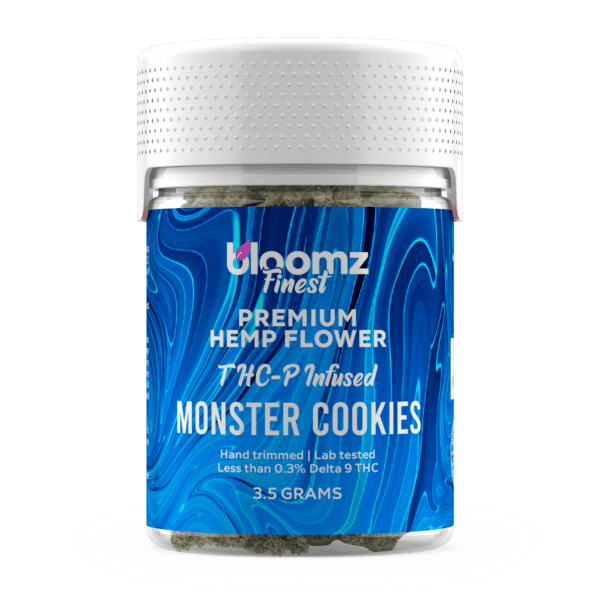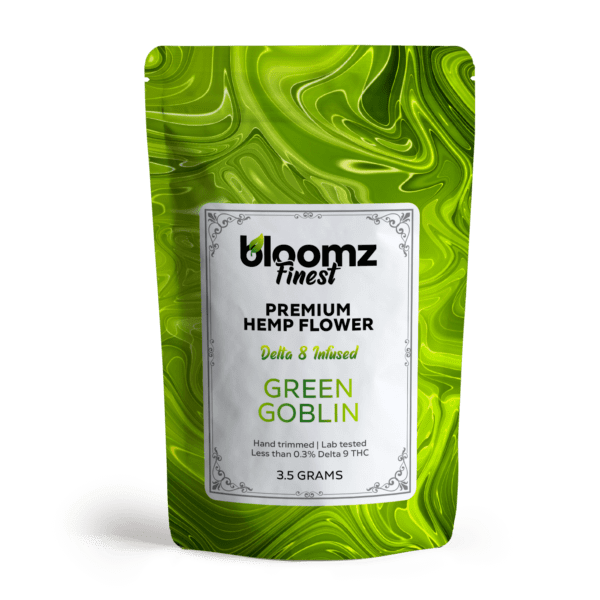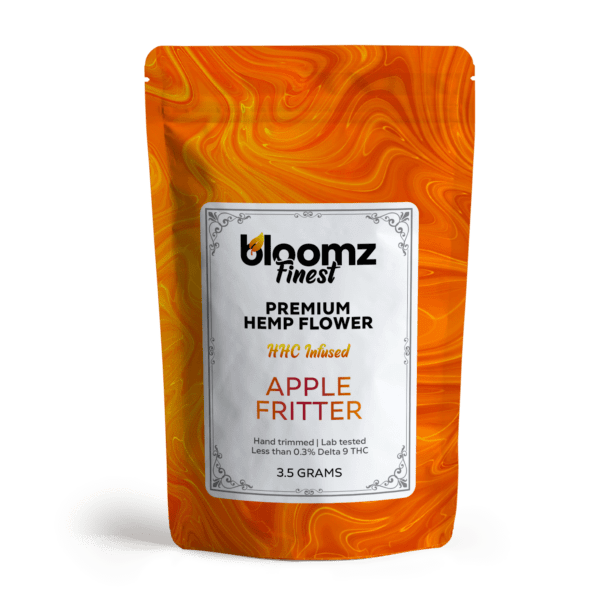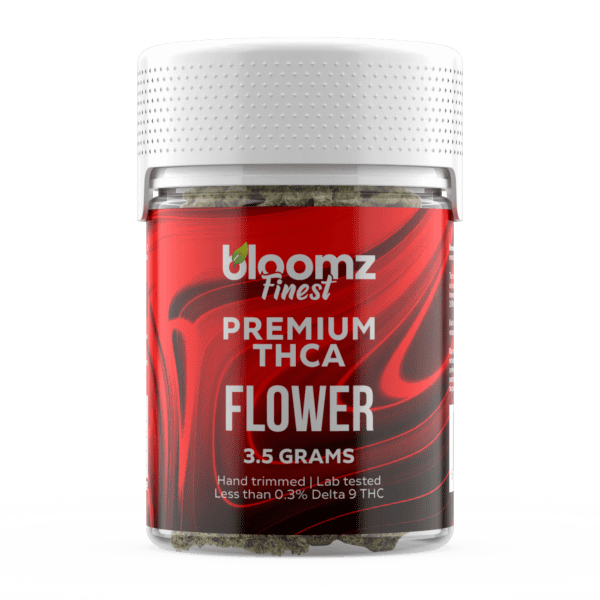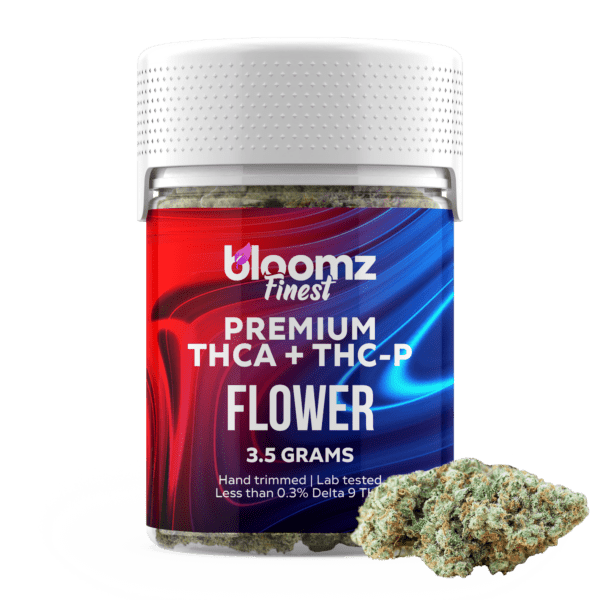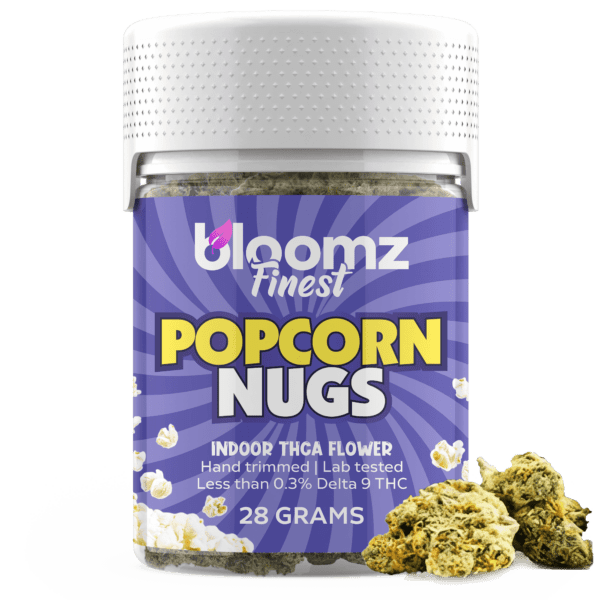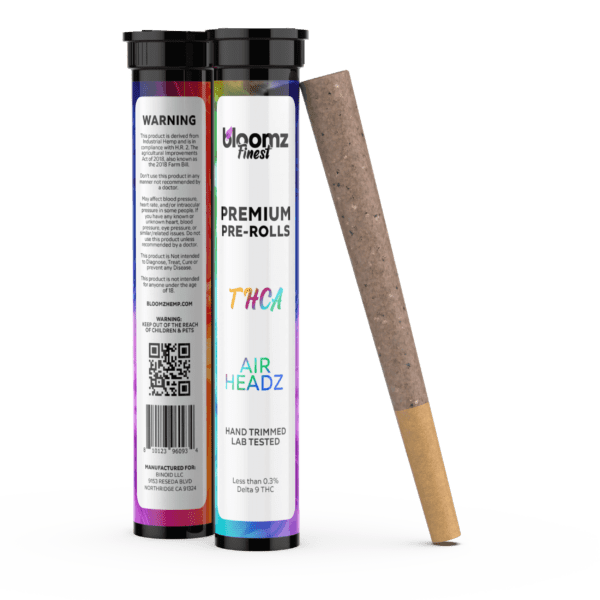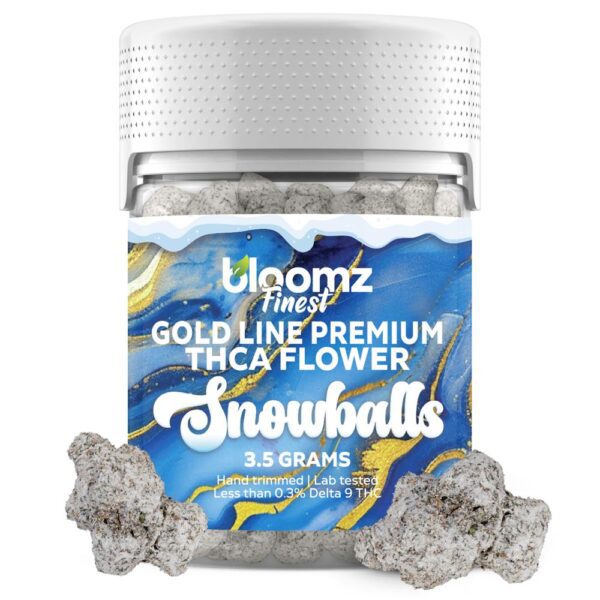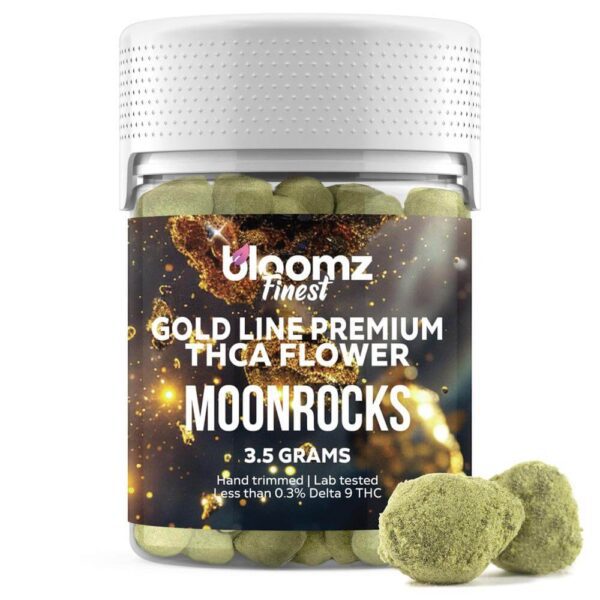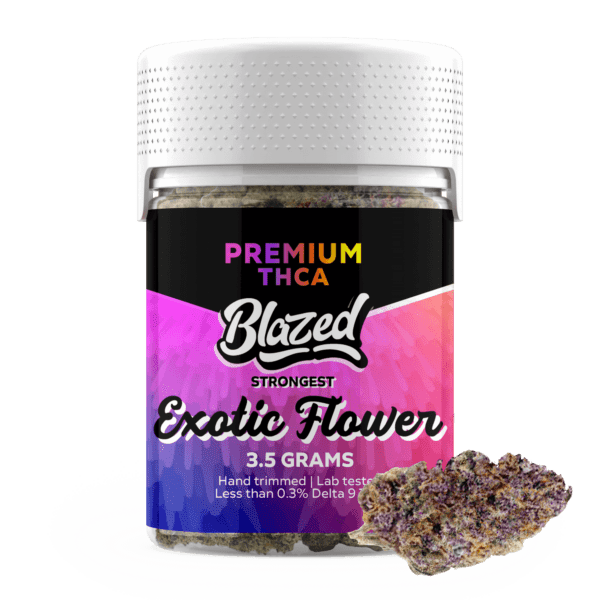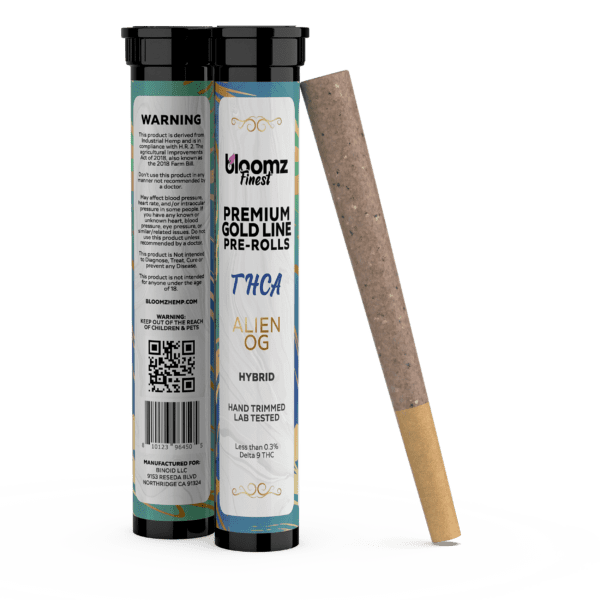There’s just something uniquely appealing about cannabis grown under the open sky, bathed in natural sunlight, and rooted in the earth. Outdoor THCA flower carries with it a connection to the elements, a story written by the sun, wind, and soil. But producing high-quality THCA flower outdoors is far from a simple “plant it and forget it” affair. It’s a demanding process that requires deep knowledge of horticulture, careful planning, constant vigilance against nature’s challenges, and meticulous post-harvest handling to capture the plant’s potential. Ever wondered how cultivators harness the power of the sun while navigating the unpredictability of nature to bring potent, flavorful outdoor THCA flower to market? Let’s journey into the world of sungrown cannabis cultivation.
To Buy Outdoor THCA Flower Click Here
A Quick Insight into What Outdoor THCA Flower is
Outdoor THCA flower refers to legal hemp cultivars (containing less than 0.3% Delta-9 THC by dry weight before heating) grown entirely outdoors, under natural sunlight, and exposed to the ambient environment – including weather patterns, soil conditions, and local ecosystems. These strains are selected and cultivated with the goal of producing significant levels of tetrahydrocannabinolic acid – that non-intoxicating precursor which actually converts to Delta-9 THC upon heating. Achieving a potency level of 20% THCA or more in an outdoor setting is a testament to skilled farming, strong genetics, and favorable environmental conditions, representing good quality sun-grown flower.
Growing outdoors offers unique advantages and challenges compared to controlled indoor or greenhouse environments. Plants benefit from the full, unparalleled spectrum of natural sunlight, which many believe contributes to a robust and complex cannabinoid and terpene profile. Outdoor cultivation often has a lower carbon footprint due to the absence of artificial lighting and climate control systems. Plus, the direct soil composition, microclimate, and surrounding ecosystem (often referred to as “terroir”) can impart unique characteristics to the final flower, leading to distinct flavors and aromas reflective of the region where it was grown.
However, outdoor cultivation also means less control. Plants are subject to variations in weather (temperature swings, rain, wind), potential exposure to pests and diseases, and contaminants from the surrounding environment. This can lead to greater variability between batches and potentially impact visual perfection (e.g., bud density, trim consistency).
What is Initially Needed to Make Outdoor THCA Flower?
Embarking on the cultivation of high-quality Outdoor THCA flower necessitates a thoughtful approach right from the start, blending careful planning with respect for the natural environment. Again, unlike indoor grows where variables are tightly controlled, outdoor cultivation requires selecting the right location, genetics suited to the climate, and robust strategies to work with nature, rather than trying to dominate it. Gathering the appropriate resources and preparing the site properly lays the crucial foundation for a successful sungrown harvest. Below is a breakdown of the essential initial requirements for outdoor THCA flower cultivation:
Climate-Appropriate Genetics: Selecting the right strains is paramount. Cultivators need varieties known to thrive in their specific climate zone. This means choosing strains with proven resistance to local pests and diseases (like powdery mildew or bud rot), appropriate flowering times that align with the length of the growing season (avoiding strains that finish too late and risk frost or fall rains), and robust structures that can withstand wind and weather. Crucially, these strains must also have the genetic potential to produce high levels of THCA while remaining compliant with Delta-9 THC limits.
Suitable Land & Location: The chosen site is critical. Key factors include:
Sunlight Exposure: Cannabis requires abundant direct sunlight – ideally 8+ hours daily – for vigorous growth and optimal cannabinoid production. South-facing slopes are often preferred in the Northern Hemisphere.
Drainage: Good soil drainage is essential to prevent root rot, especially during rainy periods. Slightly sloped land or raised beds can help.
Water Access: A reliable source of clean water (well, municipal, rainwater catchment) is necessary for irrigation, particularly during dry spells. Water quality should be tested.
Security & Privacy: The location needs to be secure from theft and unauthorized access, adhering to all local regulations regarding visibility and fencing.
Soil Quality: Access to healthy native soil is ideal, though often requires amendment. Alternatively, sufficient space for large containers or constructing amended raised beds is needed. The concept of terroir – how the specific soil and microclimate influence flavor – is relevant here.
Soil Preparation or Growing Medium: Healthy soil is the heart of outdoor growing, as this involves:
Amending Native Soil: If planting in the ground, enriching the soil with organic matter like compost, well-rotted manure, worm castings, and other amendments (e.g., bone meal, kelp meal) improves structure, fertility, and microbial life. Soil testing helps determine specific nutrient needs.
Containers/Raised Beds: Using large fabric pots, wooden beds, or other containers filled with a high-quality organic potting mix offers more control over the root environment.
Water Source and Irrigation System: Consistent watering is key, especially for large plants in full sun. While rainfall helps, supplemental irrigation is often required. Drip irrigation systems are efficient, delivering water directly to the root zone and conserving resources. Water quality should be assessed for pH and contaminants.
Nutrient Strategy: While healthy soil provides a base level of nutrients, supplemental feeding is usually necessary. Many outdoor growers prefer organic methods:
Soil Amendments: Using slow-release organic inputs mixed into the soil before planting
Top Dressing: Applying compost or granular organic fertilizers around the base of plants during growth.
Liquid Feeds: Using organic liquid fertilizers like fish emulsion or kelp solutions, or potentially conventional nutrient solutions if needed, adjusted for growth stages (more nitrogen in veg, more phosphorus and potassium in flower).
Pest and Disease Management Plan: Outdoor plants are constantly exposed to pests and pathogens. An Integrated Pest Management (IPM) approach is vital:
Prevention: Promoting plant health through good soil and watering practices, encouraging beneficial insects (ladybugs, predatory mites), using companion planting (e.g., basil, marigolds), and maintaining garden hygiene.
Monitoring: Regular scouting for pests (spider mites, aphids, caterpillars) and diseases (powdery mildew, botrytis).
Intervention: Using physical barriers (row covers when young), insecticidal soaps, neem oil, or other OMRI-listed (Organic Materials Review Institute) products judiciously. Managing pests outdoors is an ongoing battle.
Plant Support Structures: Outdoor cannabis plants can grow very large and heavy, especially during flowering. Stakes, sturdy tomato cages, or trellising nets (like SCROG setups adapted for outdoors) are often needed to support branches, prevent wind damage, and improve light penetration and airflow within the canopy.
Security Measures: Depending on the location and local regulations, adequate fencing, locked gates, and potentially security cameras may be necessary to protect the crop.
Dedicated Post-Harvest Facility: Critically, even though the plants are grown outdoors, a clean, dark, indoor space with controlled temperature and humidity is absolutely essential for proper drying, curing, and trimming. Attempting to dry high-quality THCA flower outdoors will result in rapid degradation.
Understanding the Entire Outdoor THCA Flower Process
Cultivating Outdoor THCA flower is a journey dictated by the rhythm of the seasons. Unlike the controlled, perpetual cycles possible indoors, outdoor growing follows a natural timeline from spring planting to fall harvest. Success hinges on working synergistically with the environment, anticipating challenges, and applying meticulous care, especially during the critical flowering and post-harvest stages. It’s a process that demands patience, adaptability, and a deep respect for the power of nature. And so, these would be the typical steps involved in producing outdoor THCA flower:
Strain Selection: As outlined previously, choosing robust, climate-appropriate strains with desirable THCA profiles and resilience to local environmental pressures is the foundational step.
Timing and Planting: The process usually begins in spring. Seeds might be started indoors 4-6 weeks before the last expected frost date to give them a head start, or clones acquired. Once the danger of frost has passed and the soil has warmed, these young plants (or directly sown seeds in some cases) are carefully transplanted into their prepared outdoor locations (amended ground, raised beds, or large containers). Proper timing ensures the plants can take full advantage of the long vegetative days of early summer.
Site Preparation: Before planting, the chosen plots are prepared. This involves tilling (if necessary), incorporating soil amendments, ensuring proper drainage, setting up any irrigation systems, and potentially installing initial support structures.
Transplanting/Planting: Young plants are carefully moved to their final outdoor homes, ensuring minimal root disturbance. Spacing is important to allow for adequate airflow and sunlight penetration as the plants mature. Watering immediately after transplanting helps settle the soil and reduce shock.
Vegetative Growth: Fueled by the increasing daylight hours of late spring and summer, plants focus on developing strong root systems, thick stalks, and abundant foliage. During this phase, cultivators focus on:
Watering: Providing consistent moisture, adjusting based on rainfall and temperature.
Feeding: Supplying appropriate nutrients, often nitrogen-rich, to support vigorous growth, either through soil amendments or supplemental feeds.
Pest & Disease Monitoring: Regularly inspecting plants for any signs of trouble and implementing IPM strategies as needed.
Training & Support: Pruning lower branches (lollipopping) to improve airflow, topping plants early on to encourage bushier growth, and adding stakes or cages as plants increase in size.
Flowering Initiation: Cannabis is typically a photoperiod-sensitive plant. As the days naturally shorten after the summer solstice, the plants receive the signal to switch from vegetative growth to flowering. This transition is gradual and dictated by nature, unlike the abrupt flip of a timer indoors. Nutrient regimens are adjusted to support bud development, increasing phosphorus (P) and potassium (K).
Mid-to-Late Flowering: This is often the most critical and challenging period for outdoor growers. While the buds are developing and packing on resin, they become more susceptible to:
Environmental Stress: Heavy rains can lead to bud rot (Botrytis), strong winds can break branches, humidity can encourage powdery mildew, and early frosts can damage or kill plants.
Pest Pressure: Certain pests, like caterpillars, specifically target flowering buds.
Cultivators must be vigilant, potentially using protective measures (like temporary covers during heavy rain, if feasible), ensuring good airflow through pruning, and carefully monitoring trichome development to determine the optimal harvest window.
Harvesting: The decision to harvest is based primarily on trichome maturity (observing the transition from clear to milky/amber with magnification) but is often heavily influenced by weather forecasts. Growers may need to harvest slightly early to avoid impending frost, storms, or prolonged wet periods that could devastate the crop. Harvesting involves carefully cutting mature plants or branches, handling them gently to preserve trichomes. Outdoor harvests can be large-scale operations requiring significant labor.
Trimming: Similar to indoor flower, excess leaves need to be removed. This can be done immediately after harvest (wet trimming) or after the initial drying phase (dry trimming). Outdoor THCA flower may sometimes have a slightly looser bud structure or more leaf material compared to perfectly controlled indoor grows, potentially requiring more trimming effort. High-quality operations still prioritize careful hand-trimming to maintain quality and bag appeal.
Drying: This step is absolutely critical and must occur in a controlled indoor environment. Harvested branches or buds are hung in a dark space maintained at optimal conditions (typically around 60-70°F and 55-65% relative humidity) with good air circulation but no direct fans blowing on the buds. Proper slow drying over 7-16+ days is essential to preserve terpenes and cannabinoids; attempting to dry outdoors will lead to rapid degradation and poor quality.
Curing: Once the THCA flower reaches the target dryness (smaller stems snap), it’s moved into airtight containers (glass jars are ideal) for curing. This process, involving regular “burping” of the jars over weeks or months in a cool, dark place, is crucial for developing the flower’s final aroma, flavor profile, and smoothness, just as with indoor cannabis. It allows compounds to stabilize and harsh pigments like chlorophyll to break down.
Quality Control & Testing: After curing, representative samples are sent to an accredited third-party lab. Testing confirms THCA potency, verifies Delta-9 THC compliance, and screens for contaminants. Pesticide and microbial (mold/mildew) testing is especially critical for outdoor flower due to environmental exposure. Terpene analysis provides insight into the unique profile shaped by genetics and terroir. Visual inspection checks for quality, consistency, trim level, and any remaining pests or mold.
Packaging: The final step involves carefully packaging the tested, cured, high-quality outdoor THCA flower into appropriate containers designed to protect its integrity, comply with regulations, and present it effectively to the market.
Why is Each Step Vital to the Outdoor THCA Flower Making Process Anyways?
In the unpredictable theater of outdoor cultivation, every single step takes on heightened importance. While indoor growers command near-total environmental control, outdoor cultivators must navigate and mitigate the whims of nature. Successfully producing high-quality Outdoor THCA flower isn’t about controlling everything, but about skillfully managing the variables one can influence and making intelligent choices at each stage to maximize the potential offered by the sun and soil, while minimizing the risks posed by weather, pests, and disease. Neglecting any phase below can quickly lead to problems that are much harder to correct outdoors:
Strain Selection: Vital because the chosen genetics must be able to withstand the specific local climate, pests, and diseases. An unsuitable strain will likely fail or produce very poor quality, regardless of the grower’s efforts. It’s the foundation of resilience.
Timing and Planting: Critical for aligning the plant’s lifecycle with the available growing season and sunlight hours. Planting too early risks frost damage; planting too late may not allow enough time for full maturation before fall weather turns harsh. Proper timing maximizes the natural light cycle.
Site Preparation: Essential for addressing inherent site limitations. Ensuring good drainage prevents root diseases during wet periods. Amending soil provides the necessary foundation for healthy growth, reducing reliance on constant supplemental feeding. Proper prep mitigates environmental risks.
Transplanting/Planting: Careful handling during this stage minimizes stress on young plants, allowing them to establish quickly and strongly, making them better equipped to handle outdoor conditions. Poor transplanting can stunt growth significantly.
Vegetative Growth Management: While driven by the sun, proper watering, feeding, and especially early pest detection are crucial. Outdoor plants face constant pressure; proactive management during vegetative growth builds stronger plants better able to resist issues during the more vulnerable flowering stage. Support structures prevent physical damage later on.
Flowering Initiation: Though naturally triggered, ensuring plants are healthy and properly nourished heading into flower is key for maximizing bud development potential under natural light conditions.
Mid-to-Late Flowering Vigilance: This phase demands constant attention outdoors. Protecting buds from rain (bud rot/Botrytis) and pests (like caterpillars) is vital for preserving the harvest. Good airflow management through pruning helps prevent mold in humid conditions. This step is about actively defending the developing crop.
Harvesting: Precise timing based on trichome maturity is ideal, but the need to harvest before severe weather hits often becomes the overriding factor outdoors. Harvesting too late risks devastating losses to mold or frost. This decision balances peak quality with practical risk management. Gentle handling preserves the quality achieved.
Trimming: Careful trimming, preferably by hand, is vital for removing excess leaf material and potential contaminants (dust, small insects) common in outdoor grows. It significantly impacts the final product’s appearance, smokability, and overall quality perception.
Drying: Absolutely non-negotiable for quality preservation. Moving the harvested flower to a controlled indoor drying environment immediately rescues it from the fluctuating and often unsuitable outdoor conditions. Slow, proper drying preserves the delicate terpenes and cannabinoids developed under the sun. Failure here ruins the entire harvest.
Curing: Just as critical as for indoor THCA flower, curing transforms properly dried outdoor buds from potentially harsh to smooth and flavorful. It allows the unique terpene profile, influenced by the terroir, to fully develop and stabilize. It’s the essential finishing touch that elevates good outdoor to great outdoor.
Quality Control & Testing: Especially vital for outdoor due to higher potential exposure to environmental contaminants (pesticides from neighboring areas, airborne mold spores, soil heavy metals). Rigorous testing ensures safety and verifies the quality achieved despite the challenges. It builds consumer confidence in sungrown products.
Packaging: The final protective measure. Good packaging shields the cured outdoor THCA flower from light, air, and moisture, preserving the unique characteristics developed throughout its challenging but rewarding lifecycle under the sun.
Successfully navigating these steps in the face of nature’s variables is the true art and science of crafting high-quality Outdoor THCA flower.
How is the Packaging Itself for Outdoor THCA Flower Made and Designed?
Once Outdoor THCA flower has been expertly grown, harvested, dried, cured, and tested, the final crucial step is placing it into packaging that preserves its hard-won quality and unique character. Packaging for sungrown flower serves the same essential functions as for indoor: it must protect the buds from physical damage, shield sensitive cannabinoids like THCA and delicate terpenes from degradation caused by UV light and oxygen, maintain optimal moisture levels, ensure compliance with safety regulations (like child-resistance), and effectively convey the product’s identity and appeal. While the flower itself may have subtle differences due to its outdoor origins, the requirements for protective and compliant packaging remain paramount, ensuring the essence of its sun-fueled journey is delivered intact to the consumer.
Biodegradable Jars
These jars represent an eco-aligned choice, often made from plant-based bioplastics like PLA (derived from corn or sugarcane) or composites including bamboo or wood fibers. The manufacturing typically involves heating the raw pellets or material mix and then using injection or compression molding to form the jar and lid. Design efforts concentrate on achieving a reliable airtight seal, often incorporating liners or specific thread designs, crucial for maintaining freshness. The inherent opacity of many biomaterials offers some light protection, and the aesthetic often complements the “natural” appeal of outdoor-grown products. Sustainability is a key design driver.
For preserving outdoor THCA flower, these jars offer rigidity against crushing and aim to create a sealed micro-environment. The design must ensure the lid and seal effectively prevent moisture loss (or gain, depending on ambient humidity) and limit oxygen exposure, both critical for preserving the terpene profile and cannabinoid potency. While perhaps not offering the absolute UV barrier of opaque glass or foil bags, their general opacity is beneficial. The surface readily accepts labels for branding and compliance information, allowing producers to highlight the sungrown aspect and eco-friendly packaging. Material inertness is also a consideration to prevent flavor transfer.
Pros:
Aligns well with the natural, sustainable image of outdoor cultivation.
Often opaque, providing some light protection.
Rigid structure protects buds from being crushed.
Reduces reliance on petroleum-based plastics.
Can achieve good airtightness depending on design quality.
Cons:
Can be more costly than traditional plastic options.
Seal effectiveness and consistency may vary.
May offer less complete UV or oxygen barrier compared to glass or Mylar.
Biodegradation usually requires specific composting conditions.
Glass Jars
A classic premium packaging choice, glass jars are formed by melting silica sand, soda ash, and limestone at very high temperatures. The molten glass is then shaped using blow molding or press molding techniques. Lids (metal or plastic) are made separately and incorporate liners designed to create an airtight seal when secured (e.g., screw-on or bail-top mechanisms). Key design considerations include glass color (clear for visibility, amber/colored for UV protection) and wall thickness for durability.
Glass is prized for being chemically inert, ensuring that the unique terpene profile of the outdoor flower (potentially influenced by terroir) is perfectly preserved without any interaction with the packaging material. Achieving a hermetic seal is a primary design goal to maintain humidity and prevent oxidation. While clear glass showcases the THCA flower, amber or other UV-protective glass is technically better for preserving cannabinoids and terpenes from light degradation, which is relevant even after harvest. The premium feel and excellent surface for labeling make glass a strong choice for high-quality outdoor brands aiming for a top-shelf positioning. Its rigidity offers maximum physical protection.
Pros:
Excellent inertness preserves natural flavor and aroma profiles.
Capable of providing a superior, long-lasting airtight seal.
Premium look and feel.
Glass is recyclable.
Offers UV protection options (colored/coated glass).
Provides complete protection from physical crushing.
Cons:
Breakable and relatively heavy/bulky.
Clear glass offers no protection from UV light.
Higher cost compared to flexible packaging.
Seal quality depends entirely on lid/liner integrity.
Recommended products
Mylar Bags
These pouches are multi-layered laminates, typically combining an outer printable layer (like PET), a middle barrier layer of aluminum foil, and an inner sealant layer (like PE). The layers are bonded together, and the material is formed into bags with features like zippers, tear notches, and gussets. The aluminum foil layer is the key design element providing an exceptional barrier against light, oxygen, and moisture. High-quality printing allows for extensive branding and information display.
For outdoor flower, Mylar bags offer excellent protection against the primary degradation factors: light (total blockage due to foil), oxygen, and moisture fluctuations. This helps preserve the potency and the potentially robust terpene profile developed outdoors. They are lightweight and space-efficient. While they don’t protect against crushing as well as rigid containers, their barrier properties are top-notch. Resealable zippers offer convenience, and child-resistant options are readily available for compliance. The large surface area is ideal for communicating the sungrown story and displaying lab results or QR codes.
Pros:
Cons:
Minimal protection against physical crushing.
Zipper seal effectiveness can decrease with repeated use.
Perceived as less premium than glass.
Difficult or impossible to recycle due to mixed materials.
Vacuum Sealed Bags
Constructed from durable, multi-layer plastic films (often PE/PA blends) designed for low oxygen permeability and strength, these bags work in conjunction with a vacuum sealer machine. One surface may be textured to facilitate air removal. The manufacturing involves co-extruding the plastic layers and forming them into bags or rolls.
The primary design function is oxygen removal. By evacuating air before sealing, vacuum sealing dramatically slows oxidative degradation, making it excellent for preserving the freshness and potency of outdoor THCA flower, especially for longer-term storage or bulk transport. It effectively locks in the flower’s aroma until opened. While very compact, it offers little crush protection and can even compress buds. It’s less common for final retail packaging of individual units but excellent for preserving larger quantities post-cure.
Pros:
Excellent preservation by minimizing oxygen contact.
Maximizes shelf life, great for storage.
Effectively contains aromas.
Creates highly compact storage units.
Relatively low cost for the bag material.
Cons:
Requires a vacuum sealer machine.
Provides little protection from crushing; can compress flower.
Not typically resealable.
Usually lacks retail shelf appeal.
Plastic waste consideration.
Plastic Vials/Tubes
Produced via injection molding using resins like polypropylene (PP), polystyrene (PS), or PET. Molten plastic is injected into molds to create the vial/tube shape and corresponding lids (often push-and-turn for child resistance). Designs can be clear or opaque and may include tamper-evident seals.
These offer a rigid structure, protecting smaller quantities of outdoor THCA flower (e.g., grams, pre-rolls) from crushing. Polypropylene is relatively inert. Child-resistant closures are common for compliance. While offering decent protection, the seal might be less reliably airtight over the long term compared to high-quality jars or Mylar bags. Opacity provides light protection. They serve as a functional and often budget-friendly option for smaller units of outdoor flower.
Pros:
Good protection against crushing.
Often include required CR and tamper-evident features.
Relatively low production cost.
Lighter than glass.
Available in clear or opaque options.
Suitable for grams or pre-rolls.
Cons:
Seal quality and long-term airtightness can be variable.
May be perceived as less premium.
Plastic waste is an environmental concern.
Potential for minor plastic/terpene interaction over extended periods (less likely with PP).
Restricted to how much you can have in them.
For Retailers and Consumers: Ways to Identify Properly Made Outdoor THCA Flower
Distinguishing well-crafted Outdoor THCA flower requires a slightly different lens than assessing indoor-grown products. While the fundamental goals of high potency, rich terpenes, and safety remain the same, the appearance and aroma profile can be influenced by the natural growing environment. Both retailers stocking their shelves and consumers making purchasing decisions benefit from understanding the hallmarks of quality in sungrown cannabis, recognizing that “different” doesn’t mean “inferior” when outdoor cultivation is done right. It’s about appreciating the unique expression of the plant shaped by the elements, while still demanding safety and efficacy.
How Retailers Can Identify Properly Made Outdoor THCA Flower
Retailers play a key role in sourcing and presenting quality outdoor flower. Identifying superior batches involves looking beyond simple categorization and assessing the actual results achieved by the cultivator. Here’s how retailers can identify high-quality outdoor THCA flower:
Know Your Farmer/Source: Develop relationships with outdoor cultivators or brands known for their meticulous practices and transparency. Understand their specific location (terroir), cultivation techniques (organic, regenerative), pest management strategies, and post-harvest handling. Reputation and transparency are key.
Scrutinize Certificates of Analysis (COAs): COAs are non-negotiable. Pay extra attention to:
Pesticide Testing: Ensure a full-panel pesticide test shows passing results (ND – Non-Detect). Cross-contamination from neighboring areas is a risk outdoors.
Microbial Testing: Check carefully for passing results on molds (Aspergillus, Botrytis) and yeast, as outdoor plants face higher environmental pressure.
Potency: Verify THCA levels and Delta-9 compliance. Potency can be high in well-grown outdoor flower.
Terpene Profile: Look for a robust and complex terpene profile. Outdoor terpenes can be very expressive.
Perform Thorough Sensory Evaluations:
Sight: Properly grown outdoor flower should still have good trichome coverage (though maybe not the same “caked” look as some indoor), healthy color (can range from deep greens to purples, possibly slightly darker than indoor), and be well-trimmed by hand. Look for density, though some outdoor strains are naturally a bit less dense. Critically inspect for any signs of mold, pests, or excessive weathering.
Smell (Nose): High-quality outdoor THCA flower often boasts rich, complex, and potent aromas, sometimes described as more “earthy” or “funky” due to terroir. It should smell clean and inviting, not musty, grassy, or damp.
Touch: Buds should be properly cured – slightly sticky, not overly dry or wet, with some resilience when gently squeezed. Stems should snap.
Assess Consistency and Trim Quality: Look for reasonable consistency within the batch. Ensure the trim job is clean, removing excess leaves and stems, which is crucial for good quality perception in outdoor flower.
Check Packaging Integrity: Ensure the packaging is appropriate, well-sealed, compliant, and protects the THCA flower adequately, preserving the quality achieved at the farm.
How Consumers Can Identify Properly Made Outdoor THCA Flower
Consumers seeking the benefits and unique qualities of sungrown THCA flower can use the following several indicators to find products that reflect careful cultivation and handling:
Choose Trusted Retailers & Brands: Shop at dispensaries known for quality control and knowledgeable staff who can provide information about their outdoor flower sources. Look for brands that specialize in or proudly market their sungrown products, often highlighting sustainable or organic practices.
Always Check for Lab Reports (COAs): Ask to see the COA or use QR codes on packaging. For outdoor THCA flower, pay particular attention to ensuring clean pesticide and mold tests. Confirm THCA potency and Delta-9 compliance.
Use Your Senses:
Sight: Look for good trichome coverage (visible resin glands), healthy colors, and a clean trim. Don’t expect the exact same appearance as indoor, but avoid flower that looks brown, overly leafy, sparse, or shows any signs of mold or bugs.
Smell: Expect a robust and often complex aroma. High-quality outdoor flower should smell great – earthy, fruity, piney, gassy – and clean. Avoid anything smelling musty, like hay, or damp. The smell upon opening the package should be significant.
Feel (Post-Purchase): Ensure the buds feel properly cured – slightly sticky, relatively dense for their structure, and not overly dry or moist.
Consider the Price: Well-grown outdoor THCA flower often represents good value due to lower production costs (free sunlight!). However, exceptionally well-crafted outdoor flower still commands a fair price reflecting the skill and effort involved. Be wary of extremely cheap options, as quality may be compromised.
Inspect the Packaging: Look for professional, sealed, compliant packaging that protects the flower from light and air. Information about the farm or growing practices is a good sign.
Evaluate the Experience: The true test is in the consumption. Quality outdoor THCA flower should offer a smooth, flavorful experience and effects (like feeling relaxed, uplifted, or blissful) appropriate to its potency and terpene profile.
Crafting Outdoor THCA Flower Really is an Intricate Process!
Bringing exceptional Outdoor THCA flower from seed to sale is a profound exercise in partnership with nature itself. It demands not only a mastery of horticultural fundamentals but also an acute sensitivity to the rhythms of the seasons, the nuances of the local environment, and the constant need for adaptation. Cultivators must act as vigilant guardians, shielding their crop from nature’s harsher moods while harnessing its benevolent power – the nourishing sun, the living soil, the open air. The journey requires resilience, foresight, and a deep commitment to meticulous post-harvest care to preserve the unique, sun-kissed quality of the final product. The resulting flower, imbued with the character of its environment, stands as a powerful reminder of the beauty and complexity that can arise when human skill works in concert with the natural world.
To Buy Outdoor THCA Flower Click Here
Recommended products
-
THCA Snowballs – Gold Line
$57.99$89.99 -
THCA Moonrocks – Gold Line
$57.99$89.99 -
Blazed Exotic THCA Flower
$36.99$79.99 -
Exotic THCA Pre-Rolls Gold Line – 3-Pack/6 Pack
$36.99$69.99

